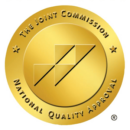Dependence on opiates is defined by withdrawal symptoms that start when a person suddenly stops using opioids. The opiate withdrawal timeline depends on a few different factors. The type of opioid you are taking and your body chemistry will affect the severity and the length of withdrawal symptoms.
Opiate withdrawal can be excruciating and uncomfortable. The pain of withdrawal keeps many people from seeking treatment. Treatment programs like medical detox can help relieve the symptoms of opiate withdrawal. Medical detox can also reduce the length of time that you will go through withdrawal.
What Does an Opiate Withdrawal Timeline Look Like?
Opiate withdrawal symptoms typically start between eight and thirty hours after you took your last dose. Depending on the type of opiate you use, whether it is heroin or prescription opiates, the safest way to go through opiate withdrawal is in a medical detox program. For some, the opiate withdrawal will be shorter, and for others, it can last up to a month or more.
Day 1
8-24 hours after your last dose: If you take short-acting opioids like fentanyl, codeine, and heroin, you will start to feel the following withdrawal symptoms.
- Drug cravings
- Headaches
- Anxiety
- Aggression
- Muscle aches and pains
- Loss of appetite
- Problem sleeping
Day 2
24-48 hours after your last dose: If you take long-acting opioids like oxycodone extended-release, then day two will bring these symptoms.
- The same symptoms as day one
- Excessive sweating
- Panic attacks
- Runny nose
- Stomach issues
- Insomnia
Day 3
If you take short-acting opioids, your withdrawal may begin to peak on day three. Symptoms include:
- Same symptoms as the first two days
- Nausea
- Vomiting
- Diarrhea
Day 4
If you take long-acting opioids, your withdrawal may begin to peak. Symptoms include:
- Same symptoms as days 1-3
- Enlarged pupils
- Cramping
- Stomach discomfort
- Shivering
- Fatigue
Day 5
Withdrawal will peak if you take long-acting opioids. Symptoms will include the same symptoms form the first four days.
Day 6
Day six of the opiate withdrawal timeline will feel like the first five days.
Day 7
On day seven, withdrawal symptoms start to subside, and you will begin to feel slightly better. Symptoms will include:
- Insomnia
- Fatigue
- Depressed or irritable
Long-Term
PAWS or Post-Acute Withdrawal Syndrome can continue for months after you take your last dose. Symptoms of PAWS include:
- Depression
- Irritability
- Fatigue
- Sleep disturbances
- Drug cravings
What Factors Can Affect the Opiate Withdrawal Timeline?
The opiate withdrawal timeline can be affected by many different factors. Some of these factors include:
- The number of opiates you have in your system when you enter detox.
- The length of your opiate use
- The severity of your opiate addiction.
- Your overall mental and physical health.
- Genetics
- Choosing medical detox or detox on your own.
Your opiate withdrawal timeline will vary based on the type of opiate you are withdrawing from. If you are withdrawing off heroin, a short-acting opiate, you will likely start to feel the withdrawal symptoms within eight to twelve hours of your last dose. You will reach the peak of withdrawal within 36 to 72 hours, and then they will decline drastically after five days.
Your opiate withdrawal timeline, if you take oxycodone, withdrawal symptoms begin 24 to 36 hours after your last dose. You will reach the peak of withdrawal in 4 to 6 days, but you can stay at the peak of withdrawal for weeks.
Mild withdrawal symptoms, like fatigue, depression, irritability, and sleep issues, can last for months. Medical detox can help play a crucial role in lessening the symptoms of withdrawal and helping you maintain your sobriety.
The Opiate Withdrawal Timeline: Reduce the Symptoms
When you withdrawal from an opiate use disorder, you can experience painful and uncomfortable side effects. Medical detox can help reduce the symptoms and the duration of withdrawal symptoms. Medical detox is a medically supervised form of detox.
Medical detox uses a variety of medications to reduce the severity of withdrawal symptoms and reduce the length of time you go through withdrawal. It is not recommended to withdraw from opiates unless in a medical detox program. It can be hazardous to detox alone.
Medical detox is the first step to a sober life. When you complete medical detox, it is vital to continue treatment, including medication-assisted treatment (MAT).
Medications used to reduce the opiate withdrawal timeline include:
- Antidepressants
- Benzodiazepines
- Opioid Agonists
- Non-Opioid Agonists
- Opioid Antagonist
- Partial Agonists and Antagonists
Medication administered in medical detox can reduce the time and symptoms of opiate withdrawal. Individuals who try to detox at home and not in a medical detox program have a high rate of relapse. The withdrawal symptoms become too much to handle and lead to using again. Along with medication management of withdrawal symptoms, medical detox provides emotional support and alternative therapies to help you battle withdrawal symptoms and stay on track to sobriety.
Buprenorphine is a commonly used medication in opiate detox. Buprenorphine is a partial opioid agonist and a semi-synthetic opiate. Buprenorphine produces euphoric feelings and depresses the respiratory system just as an opiate would. The effects are not as strong as opiates such as heroin or painkillers, but they help lessen withdrawal symptoms and normalize brain functions.
Other medications used to ease the opiate withdrawal timeline can treat nausea, vomiting, stomach issues, and anxiety. While going through detox, the cravings can be extremely intense. Some medications can help reduce the severity of your cravings while going through detox. The truth is, you can experience opiate cravings for months after detox. Continuing treatment after detox is vital to prevent relapse.
Why Should I Go to Medical Detox?
When you suffer from opiate addiction, detoxing at home can be extremely dangerous. Many people relapse quickly after withdrawal symptoms start. Severe withdrawal symptoms can turn hazardous. Severe dehydration can happen from vomiting and diarrhea. Without medical intervention, severe dehydration can lead to further critical issues.
Friends and family members mean well when they try to help you detox at home. They can hold your hand and try to encourage you, but it can quickly become more than they can handle. Addiction professionals are experienced in all aspects of the withdrawal process. Besides medication management of withdrawal symptoms, they provide emotional support and encouragement to help you through the withdrawal.
Why is Opiate Withdrawal Difficult?
Firstly, it’s helpful to understand what is happening during the process of opiate withdrawal. Again, opiates activate the part of the brain, which produces feelings of pleasure. This means an opiate user or addict associates substance use with positive, “feel-good” emotions.
Also, the user becomes chemically addicted – meaning they experience a physical need for the substance. It becomes difficult for the individual to function without using opiate drugs. He or she may begin to feel “off” or abnormal without the influence of these substances.
This combination of emotional and physical symptoms makes for a challenging detox. Those who have become addicted to opiates may struggle to stop using these drugs because of their emotional and physical dependence on them.
Our brains actually produce their own natural opioids. Receptors in our brains use them to regulate stress and pain. Synthetic opioids are much more potent and attach to the receptors in the same way.
The strength of these opioids induces feelings of euphoria beyond what we would usually experience. Over time, our systems become flooded and weakened by the chemicals and stop producing their own opioids.
This means our brains and bodies are then depleted of dopamine and similar chemicals. This causes many withdrawal symptoms – as the body adjusts to the lack of natural or chemical opioids.
Understanding and Avoiding Addiction Relapse
Relapse can be a reality during recovery, but, thankfully, a support program can prevent it. It’s essential to be aware that deadly overdoses usually occur during relapse. This is because the body isn’t used to the presence of such high levels of opiates anymore.
During a relapse, an opiate user may go straight in at what had previously been their usual dose. Having been through withdrawal, the body cannot cope with this, and it can be fatal.
To avoid relapsing and possibly experiencing an overdose, individuals going through an opiate detox should seek counsel, support, and guidance from professionals who understand the difficulties of withdrawal and detox.
With assistance from people who truly understand your journey and the obstacles, you might be facing. You can successfully identify any triggers that might cause a relapse to occur in your life. You can also develop strategies that will allow you to successfully deal with those triggers without returning to substance abuse.
The Difference Between Medical Detox and MAT
Medical detox programs and medication-assisted treatment (MAT) sound similar. Still, they have two different but essential roles in opiate use disorder. Medical detox programs use medication to relieve some withdrawal symptoms and prevent further health problems from withdrawal from opiates. Medical detox programs focus on ridding the body of opioids so you can begin treatment. Medical detox programs last no more than a week and guide you toward your next step in treatment.
MAT programs are a continued-care program. You can be part of a MAT program as long as you need to be. Medication-assisted treatment programs are designed to help you control your cravings and achieve a lasting sober lifestyle.
According to SAMHSA (Substance Abuse and Mental Health Services Administration), it is federally mandated to be part of a MAT program and attend therapy sessions. In other words, MAT is not an all in one comprehensive treatment plan, but a vital piece of a bigger plan in beating opiate use disorder.
Medications Can Help Beyond Medical Detox
If you are a person suffering from opiate abuse, you may benefit from a medication program after you complete medical detox. Some opiate withdrawal symptoms can last for many months after detox. You can feel anxious, irritable, or depressed, but some medications can help relieve those feelings. Drugs such as methadone and buprenorphine can reduce cravings and normalize brain function so you can focus on your recovery.
Medications alone can not prevent a person from relapsing. Combining medications with psychological counseling can drastically improve your chances of staying sober. Attending therapy sessions, you will begin to heal the underlying issues that led you to use opiates. These issues can be abuse, trauma, or mental health conditions. You will also build the skills needed to prevent relapse and cope with the stressors in life. Medications may reduce the side effects and cravings from opiates, but drugs will not cure your opiate use disorder.
Facts and Medications for Opiate Withdrawal
Researchers continue to access the medications used in MAT programs. And the findings show:
- 74% of individuals who participate in a methadone program stayed in treatment
- 46% of individuals who use buprenorphine for opiate use disorder stayed in treatment
- Taking 32 milligrams per day of buprenorphine have greater success in treatment
- Studies show that taking less than 16 milligrams a day of buprenorphine is not as effective as taking 16 to 32 milligrams a day
Benefits of MAT Participation
SAMHSA’s research has proven these additional facts and benefits of MAT programs.
- Reduction in the illegal use of opiates
- Reduction in crime related to opiate use
- Reduced relapse rates
- Increased chances of keeping a job
- Fewer babies born to mothers with a substance use disorder
- Reduction in the risk of HIV or Hep C
Let Discovery Institute Help You Today!
Addiction can make people feel completely alone. Often, those who suffer from drug or alcohol abuse feel isolated and separated from all that matters in life. It can be overwhelming and challenging to work through.
If you’ve been feeling alone in your struggle, please know that there is hope for you! Here at Discovery Institute, there are professional staff members who are willing and ready to help you overcome the challenges of recovery and enjoy the freedom to overcome addiction!
You might also consider attending support group meetings for those who have experienced something similar to you. This will help you to understand the causes of your addiction and how to prevent relapse.
These options are also likely to aid your recovery if you’re able to access a detox program or therapy. These professionals have supported many people through opiate withdrawal. They will provide a safe environment to guide you through.
For more information about addiction treatment, recovery, and how we can help you here at Discovery Institute, please contact us today. Allow us to be a part of your journey to a new and healthier way of life. We are committed to your well-being and will walk with you every step of the way!
Dr. Joseph Ranieri D.O. earned his BS in Pharmacy at Temple University School of Pharmacy in 1981 and His Doctorate Degree in Osteopathic Medicine at the Philadelphia College of Osteopathic Medicine in 1991. He is Board Certified by the American Board of Family Medicine and a Diplomate of the American Board of Preventive Medicine Addiction Certification. Dr. Ranieri has lectured extensively to physicians, nurses, counselors and laypeople about the Disease of Addiction throughout New Jersey and Pennsylvania since 2012.



